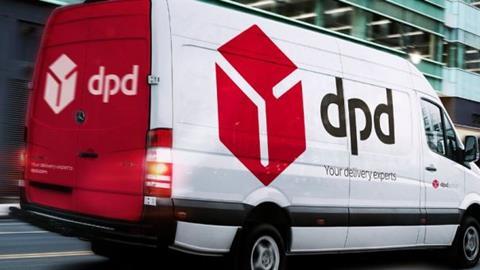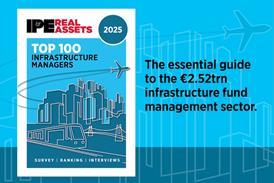DPD, the fast-growing parcel delivery group, is considering enlarging the physical size of its UK depots in light of the 'astronomical' increase in demand for its services.

In a wide-ranging interview with DPD and Colliers International, Mark Wilkes, director of infrastructure & sustainability for DPD UK, says plans are on the drawing board to take the company’s traditional 60,000 sq ft (5,500 m2) warehouse format up to 100,000 sq ft (9,200 m2).
While some might say growth is a nice problem to have, Wilkes explains the reality for DPD is the difficulty in planning for a very uncertain market. Predicting demand for 2022 to 2025 is tough to say the least, given factors such as Covid-19 and Brexit.
2020 was an unpredictable year. Wilkes says DPD had planned to open six new depots, but when the first national lockdown was ordered by the UK government in March, the company was forced into an impromptu ‘crash scenario plan’ to second-guess how demand might be affected. Should it still aim for six, or perhaps cut the number of additional warehouses, was the question.
E-commerce surge
However, it became apparent that far from needing to slash the number of new premises planned, the UK lockdown was accelerating the already increasing growth pattern in e-commerce and, in turn, fuelling parcel deliveries by DPD.
‘Our growth has been astronomical, and no more so than during Covid-19 when we saw our volumes increase by 46% against plan,’ says Wilkes. ‘In 2020 we planned to open six more depots because we knew certain existing depots were nearing capacity. But from June to November, we actually ended up opening an additional 10 sites on top of the six that were originally planned.’
One of the new depots it signed for was at M&G Real Estate’s Orbital 48 in Dartford, south east England, where the parcel service operator is leasing a 47,888 sq ft last-mile warehouse for 10 years.
Colliers International’s industrial & logistics team advised M&G, and its associate director, Tim Harding, says continued e-commerce growth throughout the pandemic is having ‘massive ramifications’ for the whole logistics market.
‘For parcel carriers such as DPD it is going to completely reshape the way they work. Just look at Asos and Boohoo gobbling up traditional high street retailers with plans to take those purely online.’
Harding’s colleague, head of industrial & logistics research Andrea Ferranti, says take-up for large distribution warehouses of 100,000 sq ft and above reached a record-breaking 48.5 million sq ft in 2020, 56% ahead of 2019.
Activity was fuelled by demand from third-party logistics providers (3PLs) and the online sector, which bolstered take-up for Grade A space. In terms of take-up by business type, pure-play online occupiers took the lion’s share and accounted for 31% of total take-up, followed by 3PLs at 30%, general retail at 18%, manufacturing at 12%, with other business types accounting for the balance.
Supply chain expansion
‘We expect the UK market will need an extra 51 million sq ft of space,’ says Ferranti. ‘Occupiers are continuing to invest in their supply chains as the need to expand online fulfilment operations will not taper over the next 12 months.
‘Due to the pandemic, 2020 saw the annual online commerce share of total retail sales reach 27.9%. It is plausible to expect this share to decrease once the UK is able to get back to some sort of normality. However, consumer shopping habits have changed, resulting in more consumers discovering the benefits of shopping online.
‘We believe people have discovered the benefits of online and businesses such as DPD have shown them how it can work with the fast delivery of a wide variety of goods.
‘In this respect, Colliers is forecasting an annual e-commerce share of total retail sales of 29% by the end of 2024. According to our analysis, this would mean that the UK could need an extra 51 million sq ft.’
Harding points out that the jump in online commerce’s share to 27.9% represents ‘a very large increase over a short period of time’, because the percentage has been hovering at around 20% for the last couple of years.
DPD owns and operates five ‘super hubs’ in the UK – three in the West Midlands and two in the East Midlands. These consolidate all the parcel volume and sort it from 4 pm onwards before being dispersed back to local DPD depots overnight. The jewel in the crown of the DPD portfolio is the bespoke site at Hinckley which measures 213,000 sq ft and will officially open this Easter.
High-tech sorting
At peak operation, a super hub will handle around 720,000 parcels per night. The facility represents a massive investment of around £100 mln. At £60 mln, the investment in technology inside the building, comprising high-tech automatic sortation systems, is greater than the cost of acquiring the land and building the property itself.
DPD requires sites of 40 acres (16 hectares) for its hubs that are capable of accommodating around 620 vehicle movements each day. At these hubs, trailers back up to vast doors, and a worker will put the parcels onto an automated conveyor belt before they disappear into a sortation system for a maximum of 90 seconds, as the parcels get scanned and bar coded and diverted onto the next conveyor belt.
Apart from the super hubs, DPD operates 86 depots of around 50,000 sq ft. Again, the warehouse contains a conveyor costing a considerable sum of money. The building density, however, is minimal compared to the size of the site which needs to be large enough for all the DPD vans that arrive to load up parcels for delivery that day.
These depots sort around 55,000 parcels per shift. Ideally, the vans are on the road by 7 am in the morning and they clock up something like 300 routes a day. The last van will leave the site by 9.30 am, at which point the yard sits empty until midway through the afternoon when the next volume begins to arrive.
There are actually two types of depot – purpose-built and start-ups. Both types are rented. The start-up depots are especially crucial when demand soars because they are designed to relieve capacity issues.
Orbital 48 in Dartford, one of the 16 new depots DPD opened in 2020 and among 86 in total, is classed as a start-up. The speculatively built warehouse was snapped up by DPD to relieve pressure from sites in Dartford, Maidenhead and Sittingbourne.
Future demand
When PropertyEU spoke to Wilkes at the start of February this year, the company had just decided to add another three sites to the six it is planning to open in the UK this year, which shows it expects demand to continue to expand.
But the very real challenge is not to make an extremely costly mistake. Says Wilkes: ‘What does retail look like in the future? How long does lockdown last for?’ It is extremely hard to judge the pattern of demand between 2022 and 2025, yet the company must do this now in order to decide on its property strategy.
If it doesn’t act decisively it could miss out massively, yet make a mistake and it could be a very costly error. After all, its purpose-built sites are a huge investment on 25-year leases.
DPD is not only contending with the uncertainty around Covid-19 but with Brexit as well. ‘It’s coming at us from all directions,’ says Wilkes. ‘If we are not careful, and we get it wrong, the costs to the business will be astronomical.’
However, he does feel that DPD’s depots will need to be bigger at 100,000 sq ft to accommodate a larger number of routes – maybe 700 or 800 a day. Smaller depots might get consolidated as part of the business plan.
Operating challenges
Yet operating from larger sites presents its own problems. Just one is that DPD does not want to be the type of company whose vehicles block those of other companies with which it shares business parks. The answer may lie in ‘waves of vehicles’. Sortation systems will need to be different.
Scarcity of land is another challenge in the UK, as is rising rents, frustratingly long-winded planning systems, ESG, and power-to-site challenges.
It is, as people say, a logistical nightmare.
The scarcity of land issue is already acute. ‘There is no two ways about it. We are all after the same land and opportunity now,’ says Wilkes.
Meanwhile, rising rents are certainly a fundamental issue because the margins for a parcel delivery business are small. Therefore, it is a volume business. Rises in rental costs can make a big difference to the profitability of a site and have the potential to stifle investment.
Colliers’ Harding sympathises. ‘Sites are not coming forward particularly quickly, and with the land-hungry, low site density requirements that occupiers such as DPD have, it means different challenges to developers as well – whether they speculatively build on a normal density site or look to hold more land for design and build.’
This article also appears in the March issue of PropertyEU.










